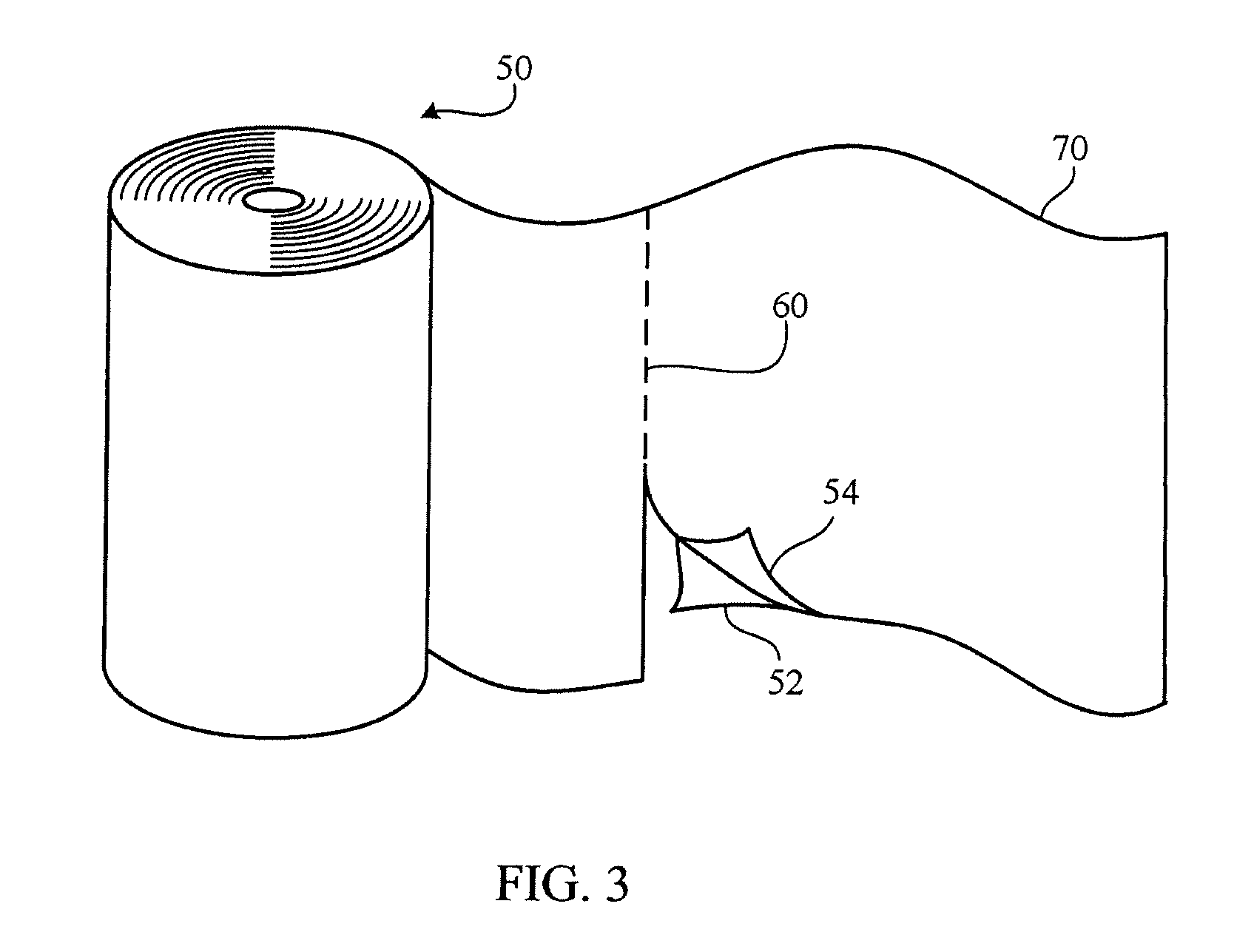Writable-erasable surfaces
- Summary
- Abstract
- Description
- Claims
- Application Information
AI Technical Summary
Benefits of technology
Problems solved by technology
Method used
Image
Examples
example 1
Quantitative Determination of The Erasable Characteristics of The Writable-Erasable Surface
The color stimulus, which is the radiation from the colored object that produces the perception of that color, can be measured. Color perception is affected not only by the spectral make up of the object, but also the light source under which it is viewed. If the spectral distribution of the light source and the relative spectral reflectance of the object are known, then the spectral composition reaching the eye of an observer with normal vision from the object illuminated by that source can be calculated. The Commission Internationale de L′Eclairage (CIE) has set up procedures for calculation of the color differences in a CIELAB color space. The formulation types described can be coated over a test panel. The red, blue and green Expo 1 markers can be used. The Quartet Ghost Duster® eraser can be used. The X-Rite Sp-62 Spectrophotometer can be used to take the color readings and it calculates ...
example 2
Determination of Erasable Characteristics of a Writable-Erasable Surface
The nature of visual change (erasable characteristics) on the writable-erasable surface 16 can be evaluated by the visual change perceived after the surface has been marked followed by erasing the marking. It can be characterized by the leave behind which can be determined after 1 or 2 passes by the eraser to erase the marking: the markings may seem to stick to the surface and they might erase as in streaks or might be spotty. The quality of the surface can also be measured by the dirtiness which can be determined after one pass with the eraser over the marked area, a faint to dark cloud might be left from the eraser, like smearing of the marking due to the eraser. Both “leave behind” and “dirtiness” can be measured on a scale of zero to ten based on the degree to which the marking material can be removed from the surface. The lower number indicates a better surface performance.
example 3
Powder Compositions
Various components (e.g., resins, additives) can be mixed and extruded to make particles, which can then be packaged into suitable containers for later use in forming a powder coating.
For example, the components described in the Table 2 and Table 3 were mixed, following a procedure similar to commonly used methods as described above, to obtain polyurethane resin based compositions containing the components having the exemplary weight percentage indicated in the table.
TABLE 2Powder composition described in Sample 1Componentwt %Hydroxyl Polyester (e.g.,29.2Crylcoat E04174)Blocked Isocyanate (e.g.,44.1Alcure 4402)Flow Agent (e.g.,1.0Powdermate 570)Degassing Agent (e.g.,0.7Benzoin)Titanium Dioxide (e.g.,25.0Kronos 2160)Total100.0
TABLE 3Powder composition described in Sample 2Componentwt %Hydroxyl Polyester (e.g.,38.3Crylcoat E04174)Blocked Isocyanate (e.g.,60.0Alcure 4402)Flow Agent (e.g.,1.0Powdermate 570)Degassing Agent (e.g,0.7Powdermate 542)Total100.0
The range of ...
PUM
| Property | Measurement | Unit |
|---|---|---|
| Temperature | aaaaa | aaaaa |
| Temperature | aaaaa | aaaaa |
| Thickness | aaaaa | aaaaa |
Abstract
Description
Claims
Application Information
 Login to View More
Login to View More - R&D
- Intellectual Property
- Life Sciences
- Materials
- Tech Scout
- Unparalleled Data Quality
- Higher Quality Content
- 60% Fewer Hallucinations
Browse by: Latest US Patents, China's latest patents, Technical Efficacy Thesaurus, Application Domain, Technology Topic, Popular Technical Reports.
© 2025 PatSnap. All rights reserved.Legal|Privacy policy|Modern Slavery Act Transparency Statement|Sitemap|About US| Contact US: help@patsnap.com



